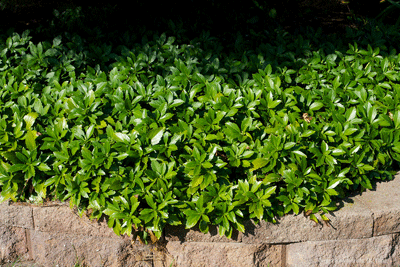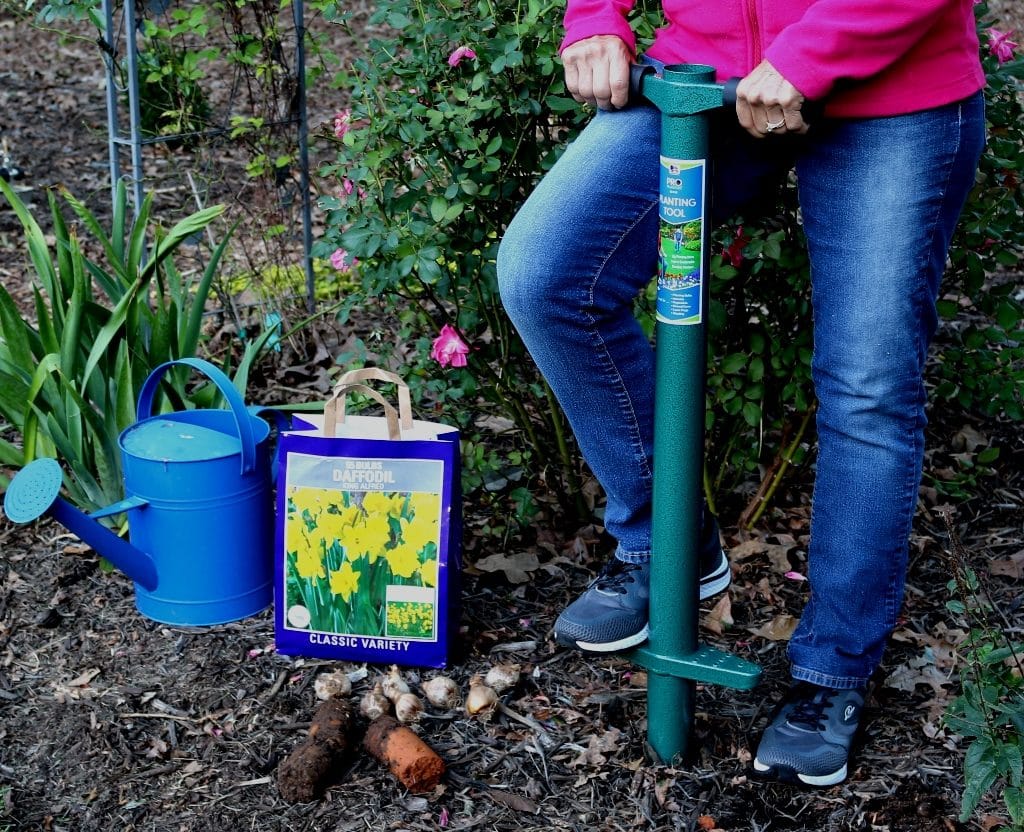You might say that pachysandra (Pachysandra terminalis), aka Japanese spurge, is the tough guy in the neighborhood. Once established, pachysandra can take a beating: from the kid’s dropped bikes, drought, you name it. Pachysandra is one of the most common ground covers used in zones 4 and above.
Native to Japan, this evergreen shrubby looking plant has been in this country for several decades. It is used extensively by landscapers, especially where erosion is a potential problem. Two of the most common varieties include Green Carpet and Green Sheen. Both varieties have waxy, glossy leaves. Another popular variety, ‘Variegata,’ aka Silver Edge, bears clean, white marginal mottling on the leaves. It is much slower growing than the other varieties. Most varieties grow to a height of 10-12.”
When to Plant

Plant pachysandra in the early spring or early enough in the fall so it has a chance to establish itself before winter sets in (much like planting a tree or perennial flower in the fall).
Where to Plant
Plant Pachysandra in full or partial shade. Slightly acidic soil is preferable, but it can grow in neutral or slightly alkaline conditions. Pachysandra is hardy in zones 4-7.
Planting Depth
Remove each plant or sprig from the cell packs and plant to the depth it was growing in the cell pack (usually 3″-4″).
Spacing
Space pachysandra plugs 6-8 inches apart
How to Plant Pachysandra video (the portion on planting Pachysandra starts 3 minutes into the video)
- Slide the 4″ depth ring onto the ProPlugger to set the depth of the hole
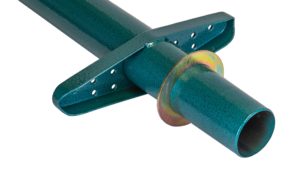
- Dig planting holes 6″ – 8″ apart
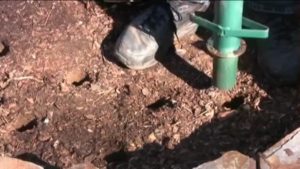
- Remove the Pachysandra from its’ growing cell and place into planting hole
- Use amended soil to fill in around the Pachysandra, pressing down gently
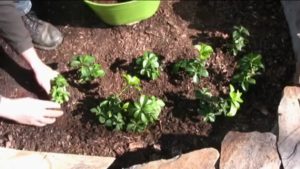
Watering
Water well during the first 2 weeks while the roots are being established. Water once a week thereafter to encourage faster spreading. Pachysandra is drought resistant, but watering often helps it spread faster.
Feeding
Mix in a 5-10-15 or organic fertilizer before you plant. A light feeding in the spring (of a general purpose 12-12-12 or organic fertilizer) each year thereafter should be sufficient to keep the plants healthy and spreading like it should.
Weed control
Like any groundcover, the biggest investment of time and energy is in the planting and establishment phase, particularly keeping weeds from cropping up between the newly planted sprigs. Weeds can be controlled by using a pre-emergent herbicide or by applying a thick layer of straw or wood mulch between the plants. Some folks say it is easier to mulch the area first then push the mulch aside where you need to plant. Pluck any weeds that may poke through the mulch. Once the groundcover is established it will spread into these areas, effectively choking out any future weeds.
Disease and Pest Problems
This plant is susceptible to a few different fungal diseases. Prevention is the key to controlling any type of fungus disease. Plant pachysandra in well-drained soil in a location with good air circulation. A small patch could be treated with a fungicide early in the season. Scale, an insect pest, can also be a problem. Minor outbreaks can be ignored. Major outbreaks may require removing the plants and discarding in the dumpster.
Neil Moran is a horticulturist and author of three books on gardening. He is also the creator and author of the garden blog North Country Gardener
Be sure to check out the helpful information on our website, including other uses for the ProPlugger including:

